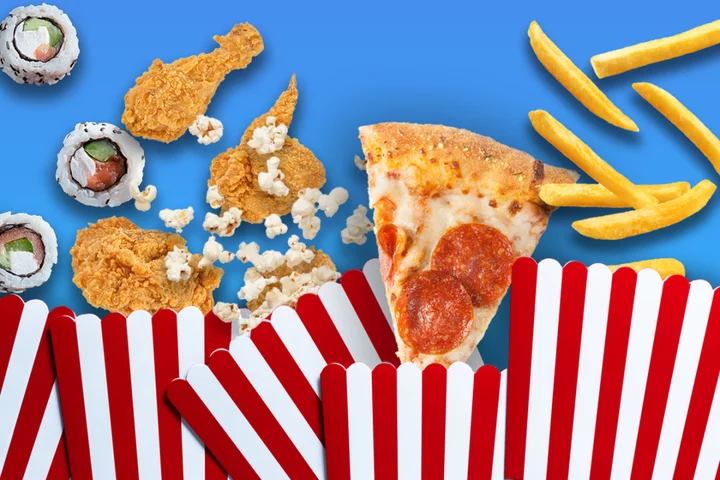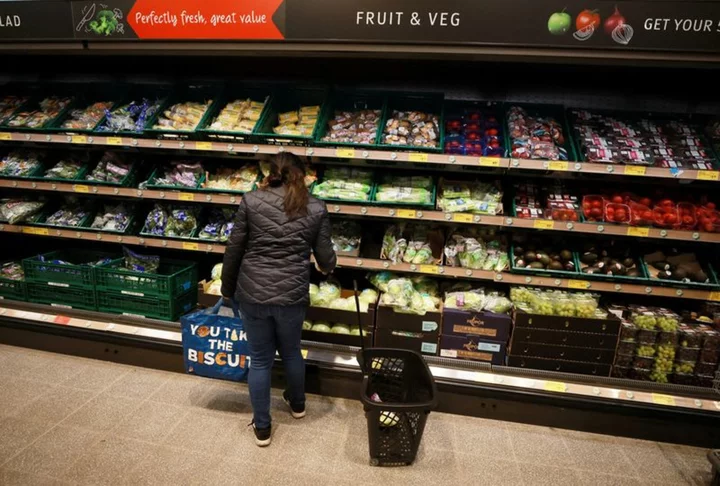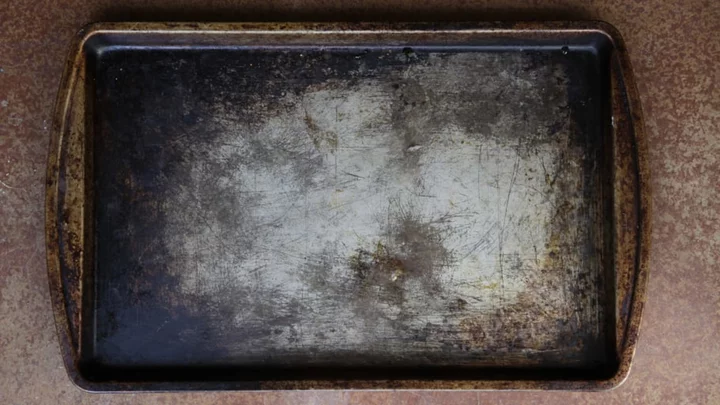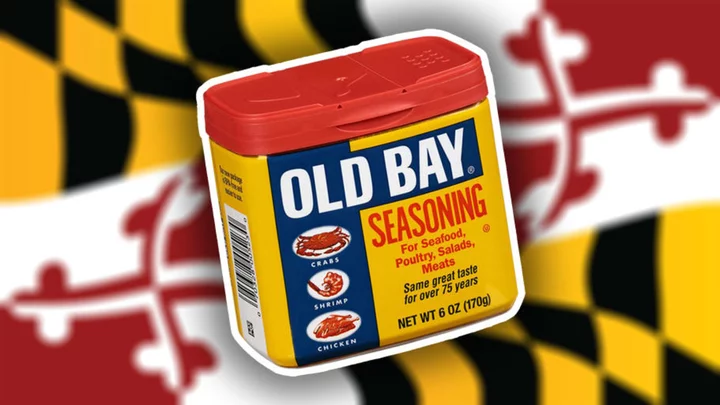Pizza, cake and meringue martinis: When did cinema food get so silly?
As I sit in the dark of Screen 2 at Oxford’s Curzon cinema, a woman a few seats away from me does something I’ve not seen before: she orders pizza. Specifically, she orders £64.85 worth of pizzas and chips for her and her family. A few minutes later – after the film has started, in fact – the food is brought to her, as though she was sitting in any regular restaurant and not in a cinema. Eating at the pictures is becoming ever more sophisticated, with ushers bringing you food as fancy as sushi without you having to move a muscle. Is it getting a bit silly? It’s no secret that cinemas have endured a range of crises over the past few years, partly thanks to the rise of streaming and then the pandemic and even more streaming. Cinemas across the country have shut down and forecasters predict that screens won’t be as full as they were pre-Covid until 2025. Some of the cinemas that survived, like AMC, are saddled with billions of pounds worth of debt. Just showing people films may not cut it in this difficult new era. As they fight to survive, cinemas are having to up their game. They have to offer “experiences”. Christina Flourentzou, operations manager at Curzon, says they learned that customers wanted more food and drink with their film thanks to their feedback service, Feed It Back. This happened before Covid struck, she points out, but post-pandemic the company rolled their restaurants out on a bigger scale. “What we’re trying to do is elevate the guest experience,” she says. “For us it’s about giving the guest the best possible experience; so anything that they want, we can give them, essentially.” At my local Curzon this includes padron peppers, mushroom and truffle croquettes, and vegan hot dogs. What Curzon has discovered, according to Flourentzou, is that when at-seat food and drink service is offered, the spend per customer goes up – often by as much as £2 per person. There is a different mindset when ordering at your seat compared with ordering at the till: “You take your coat off, your hands are free, you look at a menu, suddenly someone comes to you and says, ‘What would you like?’ Your mentality changes.” On any new site Curzon will now endeavour to install tables at seats, in order to allow for this in-screen service. Eating entire meals in your cinema seat is becoming more and more popular but it isn’t a brand-new phenomenon. Studio Movie Grill, born in Texas but with sites in states including California, Florida and Georgia, has been offering at-seat food and drink since 2000. Tearlach Hutcheson, the company’s vice president for film, calls this kind of operation a “cinema eatery”. He agrees that it isn’t just the pandemic that has caused a shift in customer priorities; it’s been happening over the past 20 years as home entertainment systems have become increasingly more sophisticated and cinemas have had to compete. “I think that people are looking for a different experience when they go to the theatres,” he says. “We have to provide a more luxurious catering experience to the guest.” I think the immersion is only going to get more and more. I think that everyone is going to adapt because this is what people want. I don’t think the cinema is enough now ... I don’t think it’s ever going to go back to popcorn and drinks Amy Fernando, creator of Taste Film At Studio Movie Grill, food revenue is more than twice that of ticket sales, and its CEO says that business is better for the company than before the pandemic. In cinemas, profit margins have always been higher on food than on tickets – though these margins are far smaller for cooked food than for popcorn and Coke. The kitchen staff at Studio Movie Grill are often dishing out six meals per minute. A recent innovation was a kitchen printer that printed orders faster than ever before. Servers are allowed to bring food and drink to guests at any point (unlike Curzon, where, Flourentzou says, it should strictly happen during the adverts and trailers) but the bulk of orders are placed within the first 30 minutes of arrival. Studio Movie Grill could represent the future of the cinema-going experience: it might soon be completely normal to bundle the film-and-a-meal experience into one. What Hutcheson is confident about is that cinemas will become more of a “destination spot” in order to entice people to leave the comfort of their homes. Flourentzou doesn’t think I’m right to call it “panic” but it does seem like cinemas are urgently fighting to stay alive. One person who knows all about using food and cinema to create an experience is Amy Fernando, creator of Taste Film, an enterprise that shows films to customers while serving them food featured in those films. Watching Goodfellas in 2016, Fernando was inspired by the infamous shaving garlic scene to marry the two things she cared most about. Seven years later, she has swapped teaching for running the business full-time. “I think the beauty of coming to the cinema, or doing an experience like this, is sharing it with like-minded people,” she says. “Post-Covid there is something special in getting dressed up, going out, and sharing the experience with other people.” When I go to watch Taste Film’s version of Mrs Doubtfire, I agree. I didn’t think of the film as one featuring all that much food but at appropriate moments we are served a savoury birthday muffin; chilli salt and pepper chicken wings; a meringue martini; tiger prawn skewers with chips and salad; a pina colada; and a chilli and chocolate mousse. As Fernando says, the frisson of fun is largely to do with two communal experiences: everyone not just watching the film at the same time but eating the same food at the same time. This won’t be replicable in regular cinemas (a Taste Film ticket is £75, for example) but the company is going from strength to strength, partnering with the big streamers, and its growth is indicative of people’s updated expectations around film. “Guests want more,” says Fernando, “and younger people want more.” Ultimately, of course, it will be the quality of films that govern whether or not cinemas stay afloat. This summer has seen an unusual boom in quality and business, with Barbie and Oppenheimer proving critical darlings as well as excellent earners. But where the cinemas can’t control how good the films are, they can control the various offerings they provide around them. “I think the immersion is only going to get more and more,” says Fernando. “I think that everyone is going to adapt because this is what people want. I don’t think the cinema is enough now.” Hutcheson and Flourentzou agree. Hand in hand with this development, Hutcheson says, will be a resurgence in “purer cinematic experiences” – people wanting to experience cinema with as sophisticated a picture and sound experience as possible. He believes that it won’t be long before cinema eateries – at the moment confined to more modest theatres – will also enter the IMAX space. Look at the signs and it certainly seems as though it will be difficult to put the genie back in the bottle – which means cinemagoers may need to brace themselves for an exciting new range of smells. Fernando is probably right when she says: “I don’t think it’s ever going to go back to popcorn and drinks.” Read More Too gay, too weird, too pregnant: The most controversial Barbie dolls in history Doing things alone isn’t ‘self-love’ – we don’t need to make everything empowering Sizzling kitchen drama The Bear is spicing up the dating game for chefs ‘It started with a radish’: Chef Simon Rogan reflects on restaurant L’Enclume at 20 The true story – and murky history – of Portuguese piri piri oil 30-minute summer recipes for all the family to enjoy

As I sit in the dark of Screen 2 at Oxford’s Curzon cinema, a woman a few seats away from me does something I’ve not seen before: she orders pizza. Specifically, she orders £64.85 worth of pizzas and chips for her and her family. A few minutes later – after the film has started, in fact – the food is brought to her, as though she was sitting in any regular restaurant and not in a cinema.
Eating at the pictures is becoming ever more sophisticated, with ushers bringing you food as fancy as sushi without you having to move a muscle. Is it getting a bit silly?
It’s no secret that cinemas have endured a range of crises over the past few years, partly thanks to the rise of streaming and then the pandemic and even more streaming. Cinemas across the country have shut down and forecasters predict that screens won’t be as full as they were pre-Covid until 2025. Some of the cinemas that survived, like AMC, are saddled with billions of pounds worth of debt. Just showing people films may not cut it in this difficult new era. As they fight to survive, cinemas are having to up their game. They have to offer “experiences”.
Christina Flourentzou, operations manager at Curzon, says they learned that customers wanted more food and drink with their film thanks to their feedback service, Feed It Back. This happened before Covid struck, she points out, but post-pandemic the company rolled their restaurants out on a bigger scale. “What we’re trying to do is elevate the guest experience,” she says. “For us it’s about giving the guest the best possible experience; so anything that they want, we can give them, essentially.” At my local Curzon this includes padron peppers, mushroom and truffle croquettes, and vegan hot dogs.
What Curzon has discovered, according to Flourentzou, is that when at-seat food and drink service is offered, the spend per customer goes up – often by as much as £2 per person. There is a different mindset when ordering at your seat compared with ordering at the till: “You take your coat off, your hands are free, you look at a menu, suddenly someone comes to you and says, ‘What would you like?’ Your mentality changes.” On any new site Curzon will now endeavour to install tables at seats, in order to allow for this in-screen service.
Eating entire meals in your cinema seat is becoming more and more popular but it isn’t a brand-new phenomenon. Studio Movie Grill, born in Texas but with sites in states including California, Florida and Georgia, has been offering at-seat food and drink since 2000. Tearlach Hutcheson, the company’s vice president for film, calls this kind of operation a “cinema eatery”. He agrees that it isn’t just the pandemic that has caused a shift in customer priorities; it’s been happening over the past 20 years as home entertainment systems have become increasingly more sophisticated and cinemas have had to compete. “I think that people are looking for a different experience when they go to the theatres,” he says. “We have to provide a more luxurious catering experience to the guest.”
I think the immersion is only going to get more and more. I think that everyone is going to adapt because this is what people want. I don’t think the cinema is enough now ... I don’t think it’s ever going to go back to popcorn and drinks
Amy Fernando, creator of Taste Film
At Studio Movie Grill, food revenue is more than twice that of ticket sales, and its CEO says that business is better for the company than before the pandemic. In cinemas, profit margins have always been higher on food than on tickets – though these margins are far smaller for cooked food than for popcorn and Coke. The kitchen staff at Studio Movie Grill are often dishing out six meals per minute. A recent innovation was a kitchen printer that printed orders faster than ever before. Servers are allowed to bring food and drink to guests at any point (unlike Curzon, where, Flourentzou says, it should strictly happen during the adverts and trailers) but the bulk of orders are placed within the first 30 minutes of arrival. Studio Movie Grill could represent the future of the cinema-going experience: it might soon be completely normal to bundle the film-and-a-meal experience into one. What Hutcheson is confident about is that cinemas will become more of a “destination spot” in order to entice people to leave the comfort of their homes. Flourentzou doesn’t think I’m right to call it “panic” but it does seem like cinemas are urgently fighting to stay alive.
One person who knows all about using food and cinema to create an experience is Amy Fernando, creator of Taste Film, an enterprise that shows films to customers while serving them food featured in those films. Watching Goodfellas in 2016, Fernando was inspired by the infamous shaving garlic scene to marry the two things she cared most about. Seven years later, she has swapped teaching for running the business full-time. “I think the beauty of coming to the cinema, or doing an experience like this, is sharing it with like-minded people,” she says. “Post-Covid there is something special in getting dressed up, going out, and sharing the experience with other people.”
When I go to watch Taste Film’s version of Mrs Doubtfire, I agree. I didn’t think of the film as one featuring all that much food but at appropriate moments we are served a savoury birthday muffin; chilli salt and pepper chicken wings; a meringue martini; tiger prawn skewers with chips and salad; a pina colada; and a chilli and chocolate mousse. As Fernando says, the frisson of fun is largely to do with two communal experiences: everyone not just watching the film at the same time but eating the same food at the same time. This won’t be replicable in regular cinemas (a Taste Film ticket is £75, for example) but the company is going from strength to strength, partnering with the big streamers, and its growth is indicative of people’s updated expectations around film. “Guests want more,” says Fernando, “and younger people want more.”
Ultimately, of course, it will be the quality of films that govern whether or not cinemas stay afloat. This summer has seen an unusual boom in quality and business, with Barbie and Oppenheimer proving critical darlings as well as excellent earners. But where the cinemas can’t control how good the films are, they can control the various offerings they provide around them. “I think the immersion is only going to get more and more,” says Fernando. “I think that everyone is going to adapt because this is what people want. I don’t think the cinema is enough now.”
Hutcheson and Flourentzou agree. Hand in hand with this development, Hutcheson says, will be a resurgence in “purer cinematic experiences” – people wanting to experience cinema with as sophisticated a picture and sound experience as possible. He believes that it won’t be long before cinema eateries – at the moment confined to more modest theatres – will also enter the IMAX space.
Look at the signs and it certainly seems as though it will be difficult to put the genie back in the bottle – which means cinemagoers may need to brace themselves for an exciting new range of smells. Fernando is probably right when she says: “I don’t think it’s ever going to go back to popcorn and drinks.”
Read More
Too gay, too weird, too pregnant: The most controversial Barbie dolls in history
Doing things alone isn’t ‘self-love’ – we don’t need to make everything empowering
Sizzling kitchen drama The Bear is spicing up the dating game for chefs
‘It started with a radish’: Chef Simon Rogan reflects on restaurant L’Enclume at 20
The true story – and murky history – of Portuguese piri piri oil
30-minute summer recipes for all the family to enjoy









